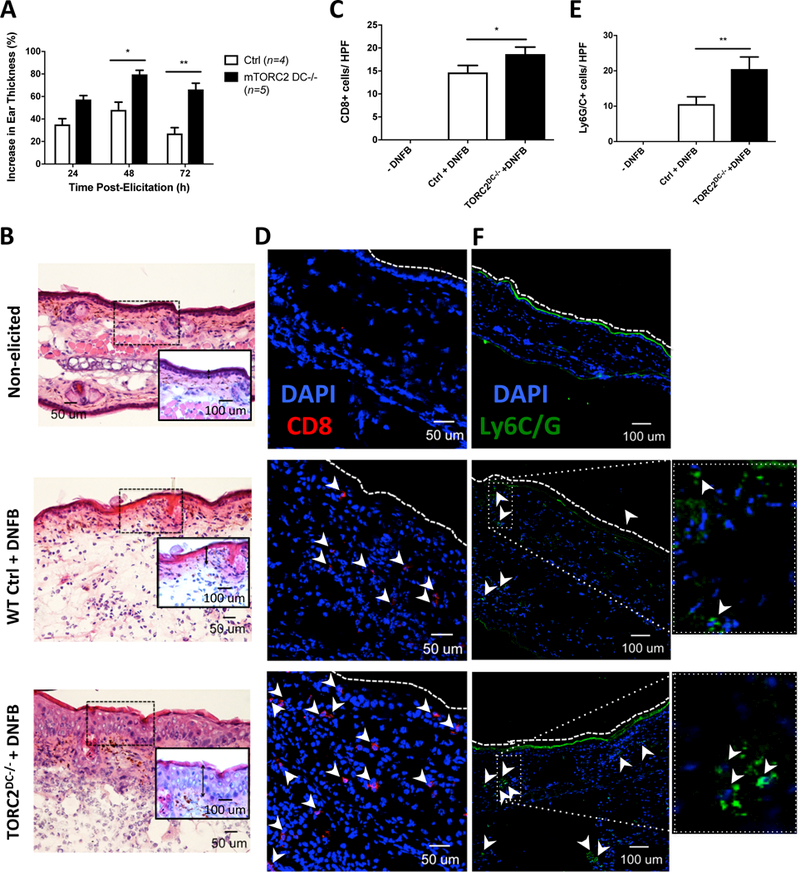FIGURE 8.

TORC2DC−/− mice exhibit enhanced cutaneous delayed-type hypersensitivity (DTH) responses. Female WT control (Ctrl) or TORC2DC−/− mice were sensitized with dinitrofluorobenzene (DNFB) on the skin of the abdomen on day 0, then challenged 5 days later with DNFB on the right ear pinna to elicit a DTH response. (A) Percent increase in pinna thickness of the elicited ear compared with the non-elicited ear 24, 48, and 72 hours post-challenge; Student’s t-test *, p<0.05; **, p<0.01. (B) Representative H&E staining of non-elicited and DNFB-challenged ears, as indicated; images are representative of n=4–5 mice. Insets are higher power views of the areas highlighted. Vertical inverted arrows indicate the thickness of the epidermal layer. (C) Numbers of CD8+ cells within the ear pinna 72 hours post-challenge; n=3 high-powered fields (HPF) per mouse; 4–5 mice per group; Student’s t-test, *, p < 0.05. (D) Representative immunofluorescence (IF) DAPI (blue) and CD8 (red) staining (arrowheads) of non-elicited and challenged ears. (E) Numbers of Ly6G/C+ cells within the ear pinna 72 hours post-challenge; n=4–5 mice per group; Student’s t-test, **, p < 0.01. (F) Representative IF DAPI (blue) and Ly6G/C (green; arrowheads) staining of non-elicited and challenged ears. Images on the far right are higher power views of the rectangular areas outlined by dotted lines in (F).
